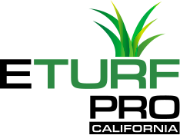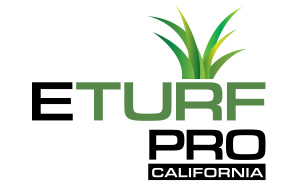Lawn Issues You Can Solve With Artificial Grass
Let’s face it, keeping a natural lawn clean, green, and healthy is a tedious task. It calls for effort, regular maintenance, money, and water. Other problems you have to deal with are bald spots, thinning, and fungal diseases. Many residential and commercial space wonders have to deal with this to make their areas more inviting.
If you do not have the time or money to keep up with natural grass, then it is time you solve your problem. Luckily, there is one functional solution for the lawn issues you face with natural grass, artificial turf. This practical solution will solve multiple lawn issues.
Artificial turf does not always have the best reputation. People are often prejudiced against the first variation, which did not look as natural or beautiful. But today, artificial grass is excellent and looks natural. And it is the perfect solution to all your lawn options.
Read on below to find out how artificial grass can solve the most common lawn issues you will face with a natural lawn. Hopefully, you will have no doubts by the end of this list.
Trading Grass For Artificial Turf
Grass burn
Grass burn is quite common. Pet urine can be very acidic to the grass, and acidity can spread to the soil. Grass can also burn due to fertilizers, pesticides, and even contaminated water. Sadly, this affects the look and health of your lawn.
Instead of dealing with this, you can get waterproof artificial turf. It is odor-free and not susceptible to pet urine acidity. Additionally, there is no need for fertilizers or pesticides, so there is no further threat of grass burn.
Bald spots
Bald spots are common in artificial lawns. It could result from too much foot traffic, inadequate water, primarily if you use a sprinkler system, disease, pets, or lack of sunlight. The bald spots will steal the spotlight, making your lawn less attractive.
Artificial turf quickly solves this problem. Since it is not dependent on water or sunlight to grow, there is no threat of thinning and bald spots. You can even replace balding areas such as walkways with artificial turf.
Dead grass
This is a common and frustrating issue that lawn owners need to deal with. Whether it is excessive sun exposure, lack of watering, or a new fertilizer or pesticide reaction, dead grass is hard to revive. Despite what you do, you could end up with dead grass.
Artificial turf needs nothing to remain green and beautiful. Sun exposure has nothing on artificial turf. And the only watering you need to keep up with is to clean the grass when it gets dusty or dirty.
Excessive water use
Keeping natural grass alive and healthy is not easy. You need to water the grass constantly, and sadly, this means a lot of water goes to waste. Using sprinklers does not get the water deep enough, so the grass retains shallow roots.
This means the lawn can die without regular watering. If you live in drought-stricken areas, this is a huge issue. Artificial grass does not need regular watering. You only need to clean it once in a while, and it will look good in any season. It is the epitome of water conservation.
Nutrient soil deficiency
Unhealthy soil prevents grass from growing lush and vibrant. Off pH and pollution make the ground inadequate for plant growth. Therefore, you could be doing everything right, but the soil will not support your lawn. Getting your dirt back on track can take a long time.
Turning to artificial turf is a great way to never deal with unhealthy soil. It covers the ground, and you won’t have to worry about the soil’s effect on the artificial grass.
Pest infestation
Many pests can wreak havoc on your natural grass. From ants to grasshoppers and grubs, these little critters can feast on the leaves to the roots. These pests can spread diseases and attract other animals like birds and rodents, damaging your lawn.
Artificial turf does not attract insects, thus preventing damage to your lawn. The synthetic material does not have nutrients to feed on. This is the best choice for people who cannot get rid of the pests on natural lawns.
Weeds
Every natural lawn owner understands the struggle with weeds. Fertilizers make their growth stronger, and they secure nutrients for themselves, making it difficult for your grass to thrive. It takes a lot of effort to make your lawn utterly free of weeds. And chemical use only affects the natural grass.
To avoid this issue, switch to synthetic grass. It does not support weed growth, and you will not have to invest in expensive weed killers that will affect your soil and nearby water sources.
Slipperiness
Some lawns do not have proper drainage, so the grass becomes slippery when it rains and snows, which is a risk since you and others can get serious injuries. It is not an ideal setting for kids or pets. And you can quickly solve this with artificial turf.
Artificial turf has good drainage capabilities, and the material is not slippery even when it is wet. Therefore, it would be an excellent option for areas with a lot of precipitation.
Mud
Mud is a fact of life in many areas, especially after it rains. Natural grass may not always drain the water well, which can bring mud to your lawn. Mud is dangerous because it is slippery. Additionally, mud can harbor many bacteria that affect the health of your pets and children.
Artificial turf does not absorb water and drains faster. Therefore, you do not have to worry about mud and the bacteria that comes with it.
Pollen and grass allergies
And lastly, pollen and grass allergies are a primary concern with natural lawns. They are allergens that could affect your health and those living in your area. Your children will not even be able to play well without needing allergy medication.
Artificial turf does not have any allergens. Therefore, it is the perfect material if you are prone to allergic reactions.


